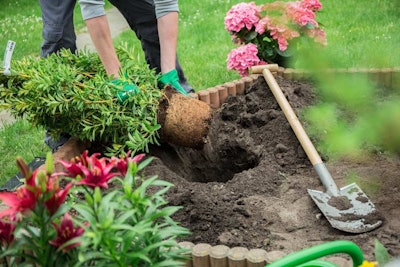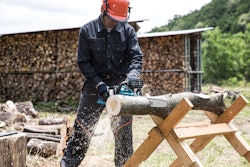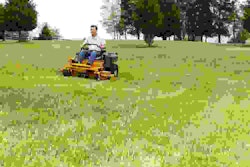
Many landscaping companies come to a project site and find that some customers might have attempted a DIY project and have, in actuality, made their garden or landscape unfit for growing. Or another landscaping company could even be the culprit of such a faux pas.
Regardless of who made the mistake, it’s now up to you to do everything you can to right this wrong. To protect your customer’s landscaping investments and give your crew a clean slate to work with going forward, take a look at what you need to consider before starting to dig.
Check the soil
Step one in this process is to take stock of what exactly you’re coming into and what condition the soil is in.
To promote the long-term survival of your customer’s plants, the condition of the soil must be in top shape; the soil at the bottom of the hole needs to be loose to allow roots to thrive.
When soils are compacted, whether it be from foot traffic or heavy equipment, the pores of the soil will not be as large as they need to be, which will keep roots from being able to push through.
With a decently sized and well-managed hole, this problem can be rectified. Be sure to check the entire area for compacted soil, as this could end up stunting the growth of otherwise robust plants.
If you find the soil is compacted, start at the bottom of the hole by taking a trowel and pushing gently into the sides, and prying outward. Weaker soil will break off and natural structure cracks along the side of the hole will appear. These cracks will help water and air movement, as well as the growth of the roots.
Be sure to avoid stepping on the soil after you’ve finished this process, as this will once again compact the soil and undo your previous work.
Size of the hole: Packaging types
When determining the size of the hole, the first thing to consider is what will be planted in the area and how it’s packaged: container-grown, bare-root, or balled and burlapped.
The size and depth of the hole will depend on the height and width of the plant and the way it’s packaged. The goal is to make sure the plants have more than enough room to grow up and out, and it’s also important to make sure there’s plenty of room for loose soil in the hole’s bottom to promote thriving roots.
When planting bare-root plants, remember that they need to be kept moist. These have no soil attached to the roots, are lightweight and highly perishable, and need to be planted before their buds break in spring. They may require a bit more attention than other types, but the advantage of this kind of packaging is that they allow the planter to fully inspect the root system before it’s planted.
When it comes to digging a hole for bare-root plants, be sure to keep it wide enough to allow the roots to spread into their natural position and keep it deep enough so the root flare or crown will be at the soil line. If it’s planted too deep or too high, the plant can become stressed and its health could be in jeopardy.
For container-grown plants, you’ll need to dig a hole two or three times wider than its container and only as deep as the distance from the top of the root ball to the bottom of the container. This will allow the roots to expand horizontally in the loose soil and ensure that the crown is above the soil.
Balled and burlapped plants will require a wide hole that’s two or three times wider than the root ball. This will provide loose soil that will allow the roots to expand horizontally near the surface and get the oxygen they require.
Keep an eye on the depth of the hole as you dig to make sure the top of the root-ball will sit just above the surrounding grade. If the hole is too deep, the root-ball will settle, and when this happens, excess soil that accumulates around the trunk can create ideal spots for diseases to enter the plant.











